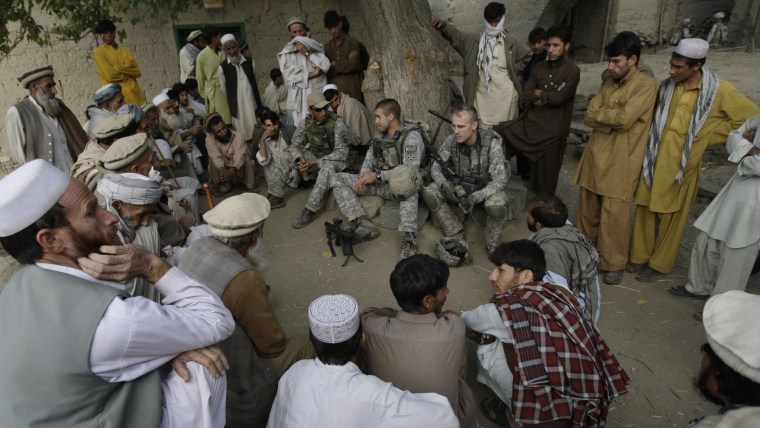WASHINGTON — Civilian casualties and Taliban attacks in Afghanistan are mounting as the U.S. withdrawal nears completion and the Afghan military continues its collapse, according to a new quarterly report from a U.S. government watchdog that describes a country ravaged by Covid-19 and violence.
The report by the Special Inspector General for Afghanistan Reconstruction, or SIGAR, found a “dramatic increase in enemy-initiated attacks” from January through March of this year compared to the same time in previous years. There were 10,431 attacks this year, up from 7,620 last year and 6,358 in 2019.
Attacks have been increasing since the U.S.-Taliban agreement on Feb. 29, 2020, with more attacks in each three-month period since the agreement than in the same quarters in the previous year.
The number of attacks against the Afghan military and civilians has increased significantly this year, the report says, with many attacks coming during the Taliban offensive now sweeping across the country.
The Taliban launched an offensive in May after U.S. and coalition military forces began withdrawing. The offensive accelerated in June and July.
However, the report notes that Afghan forces have stopped reporting attacks as their situation deteriorates, and it says the U.S. stopped collecting attack data effective May 31 with the end of the U.S. training and advisory mission.
Civilian deaths were rising until the end of that reporting period. Resolute Support, the NATO mission in Afghanistan, reported 2,035 civilian casualties in April and May — 705 deaths and 1,330 injuries. That is nearly as many civilian casualties as in the first three months of this year combined, 2,149, and higher than in April and May of last year. According to Resolute Support, the top two causes of civilian casualties were improvised explosive devices and direct fire, and 93 percent of civilian casualties in April and May were from insurgents, largely the Taliban.
The Taliban have overrun Afghan military checkpoints and bases, district centers and a series of key border crossings, according to the SIGAR report. In some cases, the Afghan military forces, known as ANDSF, have fled.
“In some districts ANDSF forces put up some level of resistance and conducted a tactical (fighting) retreat, while in others they surrendered or fled in disorder,” the report says, citing news reports that 1,600 ANDSF fled into Tajikistan this month to avoid Taliban advances in Badakhshan province.
At a briefing last week, the chairman of the Joint Chiefs of Staff, Army Gen. Mark Milley, said the Taliban control about half of the 419 district centers in Afghanistan and are pressuring 17 of the country’s 34 provincial capitals.
“Particularly concerning was the speed and ease with which the Taliban seemingly wrested control of districts in Afghanistan’s northern provinces, once a bastion of anti-Taliban sentiment,” the SIGAR report says. At a news conference June 29, the former commander of the NATO Resolute Support Mission, Army Gen. Scott Miller, told reporters: “We should be concerned. The loss of terrain and the rapidity of that loss of terrain has to be concerning.”
The SIGAR also found that most Afghan military forces “refuse to execute missions.” Instead, the more highly trained and proficient Afghan special operators are used for basic tasks like route clearance, checkpoint security and quick reaction forces.
The Afghan air force is overtaxed now that U.S. air support has largely ended, according to the report. All Afghan air force aircraft are flying at least 25 percent over their recommended scheduled maintenance, the report found, and the readiness of most of the aircraft has plummeted since most U.S. support has withdrawn. The UH-60 Blackhawk fleet was at 77 percent readiness in May and dropped to 39 percent in June.
The U.S. military has carried out a handful of airstrikes against the Taliban this month, according to defense officials, but the aircraft fly in from neighboring countries now that nearly all U.S. military forces and equipment have left Afghanistan. Once the U.S. military mission officially ends on Aug. 31, the U.S. will still carry out strikes against Al Qaeda and Islamic State terrorists, but it will no longer carry out strikes against the Taliban.
Meanwhile, the report says, the Afghan public is coping with a 2,400 percent increase in Covid cases, the majority from the delta variant. According to the U.N., half of the population requires humanitarian assistance.
Source: | This article originally belongs to Nbcnews.com











